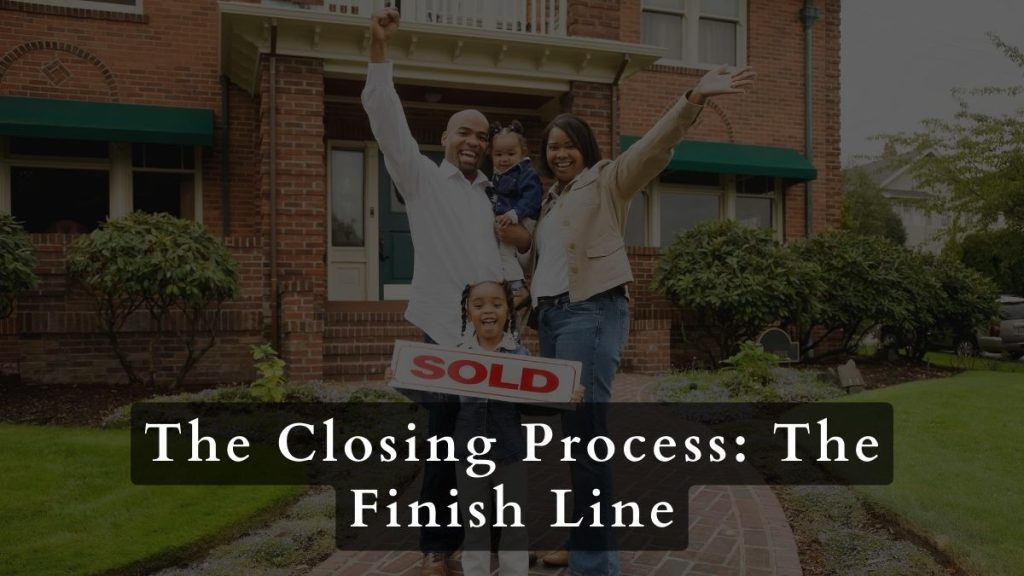
So, you’ve decided to take the plunge and sell your home. But here’s the twist—you’re planning to go it alone, sans realtor.
While the thought of navigating the real estate market on your own might seem daunting, it’s entirely possible, and potentially quite rewarding.
Welcome to this comprehensive guide on how to sell your own house without a realtor.
Whether you’re a seasoned homeowner or a first-timer, this guide is designed to equip you with the knowledge, strategies, and confidence you need to successfully sell your property.
From mastering the legal intricacies to acing the home inspection, we’ll walk you through every step of the process.
So, buckle up and get ready to embark on one of the most significant financial journeys of your life, all on your own terms.
Also, you can able to know,
1. The Legal Stuff: What You Need to Know
Navigating the legal landscape of real estate can be daunting, but it’s an essential part of selling your home.
This section will demystify the legalities, from required disclosures to contracts, ensuring that you’re well-prepared to sell your home in a manner that’s both ethical and compliant with the law.

Required Disclosures: Honesty is the Best Policy
When it comes to selling your home, transparency is not just a moral obligation but a legal one as well.
In most jurisdictions, you are required to disclose any material facts about the property’s condition that could affect its value or desirability.
This includes everything from foundational issues to a leaky roof, and even extends to less obvious factors like a history of pest infestations or neighborhood nuisances.
Failure to disclose these facts can result in legal repercussions, including the potential nullification of the sale and financial penalties.
Therefore, it’s not just about being honest; it’s about protecting yourself legally. The best approach is to be proactive.
Before listing your property, make a comprehensive list of all disclosures and share it with potential buyers.
This not only keeps you on the right side of the law but also builds trust with buyers, making them more comfortable with the purchase.
Contracts and Paperwork: The Nitty-Gritty
The contractual aspect of selling a home is often the most daunting for sellers, especially those going it alone without a realtor.
The paperwork involved is extensive and can include the initial sales agreement, disclosures, addendums, and eventually, the final closing documents.
Each of these documents is laden with legal jargon and clauses that can be difficult for the layperson to understand.
Misinterpreting or overlooking a single line could lead to complications down the line.
Therefore, it’s imperative to familiarize yourself with common real estate contract terms and their implications.
You’ll need to understand contingencies, which are conditions that must be met for the sale to proceed, as well as the rights and obligations of both parties.
It’s also crucial to set a timeline for each stage of the process, from the initial offer acceptance to the final closing, to ensure that you’re not left in a lurch.
Consult a Real Estate Attorney: Better Safe Than Sorry
While you may be adept at handling most aspects of the home sale yourself, legal matters are a different ball game altogether.
Even if you’re well-versed in real estate jargon, the legal intricacies of property transactions can be complex and fraught with pitfalls for the uninitiated.
A real estate attorney can guide you through this labyrinth, helping you understand your legal obligations and rights, reviewing or even drafting contracts, and ensuring that you’re in full compliance with state and local laws.
They can also represent you during negotiations and at the closing, providing an added layer of protection.
While hiring an attorney involves additional costs, the investment is often well worth it to avoid legal complications that could end up costing you much more in the long run.
2. Prepping Your Home for the Market
First impressions last, especially in real estate. This section delves into the art and science of preparing your home for the market.
From staging to quick fixes, we’ll explore how to make your home irresistible to potential buyers.

The Art of Home Staging: Make Your Home Irresistible
The concept of home staging goes beyond mere cleaning and decluttering; it’s about creating a vision of a lifestyle that prospective buyers would aspire to.
The objective is to make your home as appealing as possible to the widest range of buyers.
This involves a range of activities, from repainting walls with neutral colors that make spaces look larger and brighter, to strategically placing furniture and decor to highlight the home’s best features.
The idea is to help buyers visualize themselves living in the space, thereby creating an emotional connection that could tip the scales in your favor.
You can either hire a professional stager or take a DIY approach. If you opt for the latter, focus on key areas like the living room, master bedroom, and kitchen.
Remove personal items like family photos and religious icons, as these can distract buyers and prevent them from visualizing the home as their own.
The cost of staging may vary, but consider it an investment that could yield a higher selling price.
Quick Fixes: Small Changes, Big Impact
When preparing your home for sale, you don’t necessarily have to undertake major renovations to make it appealing to buyers.
Sometimes, small changes can have a disproportionately large impact on how your property is perceived.
For instance, a fresh coat of paint can instantly brighten up spaces, making them appear larger and more inviting.
Replacing outdated fixtures like faucets and doorknobs can give your home a modern touch without requiring a significant financial outlay.
Even something as simple as a well-manicured lawn can enhance curb appeal and make a lasting first impression.
The key is to identify low-effort, high-impact tasks that can be completed quickly and without breaking the bank.
Create a checklist and prioritize tasks based on their potential return on investment.
Remember, the goal is not just to sell the property but to maximize its selling price, and these quick fixes can be instrumental in achieving that objective.
Professional Photos: Worth a Thousand Words
In today’s digital age, where the majority of home searches begin online, the importance of high-quality photos cannot be overstated.
Poorly lit, grainy photos taken from awkward angles can be a major turnoff for potential buyers, making your property seem less appealing than it actually is.
On the other hand, professionally taken photos can showcase your home in the best possible light, highlighting its key features and selling points.
A professional real estate photographer knows how to use lighting, angles, and post-processing techniques to create images that not only look great but also evoke a sense of warmth and coziness that can attract buyers.
They can also create virtual tours and 360-degree views, providing a more immersive experience for online viewers.
While hiring a professional photographer will incur additional costs, the potential benefits, in terms of quicker sales and higher offers, make it a worthwhile investment.
3. Setting the Right Price
Pricing your home correctly is a balancing act that requires both market knowledge and psychological acumen.
This section will guide you through the intricacies of setting a price that’s both attractive to buyers and favorable to you.

Comparative Market Analysis: Your Pricing Compass
Pricing your home correctly is perhaps the most critical factor in ensuring a quick and profitable sale.
Set the price too high, and you risk alienating potential buyers; set it too low, and you leave money on the table. This is where a Comparative Market Analysis (CMA) comes in handy.
A CMA involves evaluating similar properties in your area that have recently sold, are currently on the market, or were on the market but failed to sell.
This provides a data-driven basis for setting your own price. The analysis takes into account various factors, including the size, condition, and features of the property, as well as market conditions like supply and demand dynamics.
While realtors typically provide this service, you can also do it yourself using online tools and databases.
However, it’s essential to be objective and not let emotional attachment to your home cloud your judgment.
Remember, a well-priced home not only attracts more buyers but also instills a sense of urgency, potentially leading to a bidding war that could drive up the final selling price.
The Psychology of Pricing: Ending in 9 and Other Tricks
The psychology of pricing is a fascinating field that explores how the human mind perceives and reacts to prices.
One well-known phenomenon is the “left-digit effect,” where prices ending in .99 or .95 are perceived as significantly lower than the next round number.
For example, a home priced at $299,999 is seen as more affordable than one priced at $300,000, even though the actual difference is just $1.
This psychological trick can be particularly effective in real estate, where even small perceived savings can have a significant impact due to the high transaction values involved.
Another strategy is to use precise, non-rounded numbers, like $297,463, which give the impression that the price has been carefully calculated and is therefore non-negotiable.
These psychological pricing strategies can be a valuable addition to your overall pricing strategy, making your property appear more attractive to potential buyers without actually reducing the price.
When to Consider Lowering the Price
One of the most challenging decisions for a home seller is knowing when to reduce the asking price.
If your property has been on the market for an extended period without attracting any offers, or if you’re receiving significantly lower offers than expected, it may be time to reconsider your pricing strategy.
However, before taking this step, it’s essential to conduct a thorough analysis to identify the possible reasons for the lack of interest.
Are there issues with the property that you weren’t aware of? Has there been a change in market conditions? Are you getting enough exposure through your marketing efforts? Once you’ve ruled out these factors, and if you’re still not getting the interest you desire, then a price reduction may be warranted. The key is to act quickly but not hastily.
A lingering property can become a “stale listing,” leading potential buyers to assume that something is wrong with it, further reducing its appeal.
Therefore, if a price reduction is necessary, it’s better to do it sooner rather than later, but only after a careful evaluation of all contributing factors.
4. Marketing Your Home Like a Pro
In the digital age, marketing your home effectively is more crucial than ever. This section will equip you with the tools and strategies to showcase your property where it matters most, from online listings to social media platforms.

Online Listings: Where Buyers Are Looking
The internet has revolutionized the way homes are bought and sold, making online listings an indispensable tool for sellers.
Websites like Zillow, Trulia, and Realtor.com attract millions of visitors each month, providing unparalleled exposure for your property.
However, simply listing your home online is not enough; you need to make it stand out amid the sea of other listings.
This involves crafting a compelling description that highlights your home’s unique features and selling points, using high-quality photos and videos, and keeping the listing updated with any changes in price or status.
It’s also crucial to optimize your listing for search engines by using relevant keywords and phrases that potential buyers are likely to use.
This increases the visibility of your listing, making it more likely to be seen by a larger audience.
Additionally, many of these platforms offer advanced features like virtual tours, interactive floor plans, and neighborhood information, which can provide a more comprehensive and engaging experience for online viewers.
Leveraging these tools effectively can significantly enhance your marketing efforts, increasing the likelihood of a quick and profitable sale.
Social Media: Your New Best Friend
Social media platforms like Facebook, Instagram, and Twitter offer a unique opportunity to market your home to a targeted audience.
Unlike traditional advertising channels, social media allows for two-way interaction, enabling you to engage with potential buyers directly.
You can post high-quality photos and videos, share updates about open houses and price reductions, and even create dedicated pages or groups to showcase your property.
The key to successful social media marketing is consistency and engagement. Regularly update your content to keep your audience interested, and promptly respond to any inquiries or comments to build rapport.
You can also leverage paid advertising options to reach a broader audience. For instance, Facebook Ads allows you to target users based on various criteria like location, age, and interests, ensuring that your ads are seen by people who are most likely to be interested in your property.
While managing a social media campaign does require time and effort, the potential rewards, in terms of increased exposure and engagement, make it a worthwhile endeavor.
Open Houses: Roll Out the Welcome Mat
Hosting an open house is a time-honored tradition in the real estate industry, and for a good reason.
It provides an opportunity for potential buyers to tour your home in a low-pressure environment, allowing them to get a feel for the property and visualize themselves living there.
However, a successful open house involves more than just opening your doors and hoping for the best. Preparation is key.
Ensure that your home is clean, decluttered, and well-staged. Create a welcoming atmosphere with pleasant background music and light refreshments.
Provide informative brochures or flyers that visitors can take home, highlighting key features and selling points of the property.
It’s also a good idea to have a sign-in sheet to capture the contact details of attendees, allowing you to follow up later.
During the open house, be available to answer questions and provide tours, but give visitors enough space to explore on their own.
The objective is to strike a balance between being helpful and not overbearing. After the event, promptly follow up with attendees to gauge their interest and address any questions or concerns they may have.
Remember, the goal of an open house is not just to showcase your property but to engage with potential buyers, building relationships that could lead to a sale.
5. Navigating Showings and Open Houses
Showings and open houses are your opportunities to connect directly with potential buyers.
This section offers practical advice on how to make these events successful, from scheduling to safety measures.

Scheduling Showings: Making It Convenient
While open houses are a great way to showcase your property to a large audience, private showings are where serious buyers often make their final decisions.
Therefore, it’s crucial to make your home available for showings at times that are convenient for potential buyers, which often means evenings and weekends.
However, this doesn’t mean you have to put your life on hold. The key is to find a balance that works for both parties.
Use online scheduling tools or apps that allow buyers or their agents to request showings during predefined time slots, providing you with the flexibility to approve or reschedule as needed.
Ensure that your home is always in show-ready condition, as last-minute showings are not uncommon.
Keep a checklist of quick-prep tasks that you can complete in a short time, like a quick vacuum or a sweep of the floors, to ensure that your home is always at its best.
While it may be inconvenient to vacate your home for showings, especially if they’re frequent, consider it a necessary evil for a successful sale.
The more people who see your home, the higher the likelihood of receiving an offer, so it’s in your best interest to be as accommodating as possible.
Hosting an Open House: Tips for Success
Hosting an open house can be a highly effective marketing strategy, but it requires careful planning and execution to be successful.
The first step is to choose the right time and date. Weekends are generally the best, as that’s when most people are off work and available to attend.
However, avoid scheduling your open house on holidays or during major events like sports games, as these can significantly reduce attendance.
Once the date is set, start promoting the event at least a week in advance. Use online listings, social media, and even traditional methods like flyers and yard signs to spread the word. On the day of the event, ensure that your home is in pristine condition.
This means not just cleaning and decluttering but also staging it to highlight its best features. Consider hiring a professional stager or at least getting some tips on how to best present your home.
During the event, be prepared to answer questions and provide information about the property and the neighborhood.
It’s also a good idea to have some light refreshments available, as this creates a welcoming atmosphere and encourages visitors to stay longer.
Finally, keep a record of attendees, either through a sign-in sheet or an electronic system, as this will allow you to follow up later and gauge the level of interest in your property.
Safety Measures: Protecting Your Home and Valuables
While showings and open houses are essential for selling your home, they also pose a potential security risk, as you’re essentially inviting strangers into your property.
Therefore, it’s crucial to take appropriate safety measures to protect both your home and your valuables.
Start by removing or securely storing any valuable items like jewelry, electronics, and important documents.
This not only protects them from potential theft but also prevents them from becoming a distraction during showings.
Next, consider installing temporary security measures like surveillance cameras or motion sensors, especially if you’re hosting an open house where multiple people will be coming and going.
Make sure all entry points are secure and that you have a record of everyone who enters your home, either through a sign-in sheet or an electronic system.
If possible, have a friend or family member present during showings to act as an extra set of eyes and ears.
After each showing or open house, thoroughly check your home to ensure that nothing is missing or out of place.
While the vast majority of showings go off without a hitch, it’s always better to be safe than sorry.
6. Communication: The Key to Selling
Effective communication can make or break a deal. This section focuses on the importance of timely and clear communication in various stages of the home-selling process, from responding to inquiries to negotiating offers.

Responding to Inquiries: Timing is Everything
In today’s fast-paced world, where instant gratification is the norm, timely communication is more critical than ever.
Whether it’s a phone call, email, or text message, aim to respond to inquiries within 24 hours, if not sooner.
Delayed responses can give the impression of disinterest or disorganization, potentially turning off prospective buyers.
However, it’s not just about speed; the quality of your communication is equally important.
Be clear, concise, and professional in your responses, providing all the necessary information without overwhelming the inquirer.
If you don’t have an immediate answer to a question, it’s better to acknowledge the inquiry and promise to get back with the information, rather than ignoring it or providing incorrect or incomplete details. Effective communication also involves active listening.
Pay attention to the questions and concerns raised by potential buyers, as these can provide valuable insights into their priorities and decision-making criteria, enabling you to tailor your sales pitch accordingly.
Remember, the goal is not just to provide information but to build a relationship, establishing trust and rapport that can facilitate the sales process.
Negotiating Offers: The Delicate Dance
Negotiating the sale price and terms is often the most stressful part of the home-selling process, fraught with emotional ups and downs for both parties.
However, it’s crucial to approach negotiations with a clear head and a well-defined strategy.
Start by setting your bottom line, the lowest price you’re willing to accept, and any terms or conditions that are non-negotiable.
This provides a framework for negotiations, helping you make informed decisions without getting swayed by emotions.
When you receive an offer, take the time to thoroughly review it, paying attention to not just the price but also the terms and conditions.
Look out for contingencies that could affect the sale, like the buyer needing to sell their current home first, as these can introduce uncertainty into the process.
If the offer is below your expectations, don’t dismiss it outright. Consider making a counteroffer, either adjusting the price or changing the terms to make it more favorable for you.
The key is to find a middle ground that satisfies both parties, without compromising your bottom line.
Keep in mind that the highest offer is not always the best one, especially if it comes with numerous contingencies or requires a long closing period.
Evaluate each offer holistically, considering all factors, not just the price, to determine which one is the most favorable for you.
Handling Multiple Offers: May the Best Buyer Win
In a hot real estate market, it’s not uncommon to receive multiple offers, creating a bidding war for your property.
While this is undoubtedly a favorable situation for a seller, it also introduces complexity into the decision-making process.
The first step is to carefully review each offer, evaluating not just the price but also the terms and conditions.
Look for red flags like low earnest money deposits, numerous contingencies, or unverified financing, as these can indicate a less serious buyer.
Once you’ve shortlisted the most promising offers, consider your options. You can accept the best offer outright, or you can counter multiple offers, encouraging a bidding war.
Another option is to use an “escalation clause,” where each buyer agrees to outbid the highest offer by a predetermined amount, up to a maximum limit.
Whichever approach you choose, it’s crucial to be transparent and ethical in your dealings, providing all parties with an equal opportunity to make their best offer.
Once you’ve made your decision, promptly inform all buyers, thanking those whose offers you’re declining and providing feedback if appropriate.
Remember, the goal is not just to get the highest price but to close the sale smoothly and efficiently, so consider all factors, including the buyer’s financial stability and readiness to proceed, before making your final choice.
7. The Home Inspection Hurdle
A home inspection can be a deal-breaker or a deal-maker. This section prepares you for this critical step, offering a checklist for preparation and tips on how to handle requested repairs.

Preparing for the Inspection: A Checklist
The home inspection is a critical milestone in the home-selling process, often serving as a make-or-break moment for the deal.
Therefore, it’s crucial to be well-prepared to ensure a smooth and successful inspection. Start by conducting a pre-inspection of your own, identifying any potential issues that could raise red flags.
This includes obvious problems like leaks or cracks, as well as less visible ones like faulty wiring or inefficient insulation.
Once you’ve identified these issues, decide which ones to fix before the inspection.
While it may be tempting to address all problems, focus on those that are most likely to affect the sale, either by reducing the price or causing the buyer to back out.
Create a checklist of tasks and prioritize them based on their potential impact on the inspection outcome.
On the day of the inspection, ensure that your home is clean and accessible. Remove any obstacles that could hinder the inspector’s work, like clutter in the basement or attic.
Provide any necessary documentation, like permits for recent renovations or invoices for repairs, as this can expedite the process and build trust with the buyer.
Be prepared to answer questions and provide clarifications, but avoid being defensive or argumentative, as this can create tension and cast doubt on your credibility.
Remember, the goal is not just to pass the inspection but to use it as an opportunity to showcase the quality and condition of your home, thereby reinforcing the buyer’s decision to purchase it.
How to Handle Requested Repairs
Once the inspection is complete, it’s common for the buyer to request repairs or improvements based on the findings.
While your initial reaction may be to resist these requests, especially if you feel they’re unwarranted, it’s important to approach this stage with an open mind and a willingness to negotiate.
Start by reviewing the inspection report and the buyer’s requests, assessing the validity and severity of each issue.
If you agree that the repairs are necessary, you have several options. You can either undertake the repairs yourself, hire a professional to do them, or offer a price reduction or credit to the buyer to cover the costs.
If you choose to do the repairs yourself, ensure that they’re completed to a professional standard, as shoddy work can lead to further complications down the line.
Provide documentation, like invoices or before-and-after photos, to prove that the repairs have been done.
If you disagree with the buyer’s requests, be prepared to make your case. Provide evidence, like a second opinion from another inspector or quotes from contractors, to support your position.
The key is to find a compromise that satisfies both parties, without jeopardizing the sale.
Remember, the goal is not just to close the deal but to do so in a manner that leaves both you and the buyer satisfied and confident in the transaction.
When to Consider Offering a Home Warranty
A home warranty is a service contract that covers the repair or replacement of major home systems and appliances, like the HVAC, plumbing, and electrical systems.
Offering a home warranty can be a strategic move in the home-selling process, serving as an added incentive for potential buyers.
This is especially true if your home is older or has had a history of repairs, as a warranty provides a sense of security and peace of mind for the buyer.
However, it’s important to carefully consider the pros and cons before offering a home warranty. On the plus side, it can make your property more attractive, potentially leading to a quicker sale or a higher selling price.
It can also serve as a negotiating tool, allowing you to refuse repair requests with the assurance that the warranty will cover any future issues.
On the downside, home warranties come with a cost, typically ranging from $300 to $600 for a one-year contract.
They also have limitations and exclusions, so it’s crucial to read the fine print and ensure that you understand what’s covered and what’s not.
If you decide to offer a home warranty, be transparent about its terms and conditions, providing the buyer with all the necessary documentation.
This not only builds trust but also protects you from potential disputes or claims down the line.
8. Appraisals and What They Mean for You
An appraisal can significantly impact your sale price and the smoothness of the transaction.
This section demystifies the appraisal process, offering insights into what to expect and how to challenge an appraisal that doesn’t meet your expectations.

The Appraisal Process: What to Expect
Once you’ve accepted an offer and the home inspection is complete, the next step is the appraisal.
Conducted by a licensed appraiser, this process involves a thorough evaluation of your property to determine its fair market value.
The appraisal is typically required by the buyer’s lender to ensure that the loan amount is justified by the property’s value.
The process starts with an on-site visit, where the appraiser inspects the property, taking note of its size, condition, and features.
They also consider external factors like the neighborhood, local real estate market trends, and recent sales of comparable properties.
Based on this information, the appraiser calculates the property’s value and submits a report to the lender. It’s crucial to prepare for the appraisal just as you would for a showing or inspection.
Ensure that your home is clean, well-maintained, and free of any issues that could negatively impact its value.
Provide any documentation that could support a higher valuation, like receipts for recent renovations or upgrades.
Be prepared to answer questions and provide clarifications, but avoid trying to influence the appraiser’s judgment, as this can be counterproductive and even unethical.
Remember, the goal is not just to get a high appraisal but to ensure that it accurately reflects the quality and value of your property, thereby facilitating the loan approval process for the buyer.
How to Challenge a Low Appraisal
Receiving a low appraisal can be a disheartening experience, potentially derailing the sale or forcing you to lower your asking price.
However, it’s important to remember that appraisals are not set in stone; they can be challenged and, in some cases, revised.
The first step is to carefully review the appraisal report, looking for any errors or inaccuracies that could have affected the valuation.
This includes factual errors like incorrect square footage or missing features, as well as subjective judgments that you disagree with, like an undervaluation of your neighborhood or comparable properties. Once you’ve identified the issues, gather evidence to support your case.
This could include updated information on recent sales, additional comparables that were not considered, or even a second opinion from another appraiser.
Submit this information to the lender, along with a formal request for a review of the appraisal.
Be prepared to make your case convincingly but respectfully, avoiding confrontational or accusatory language.
If the lender agrees to a review, they will either ask the original appraiser to reconsider or assign a new appraiser to conduct a fresh evaluation.
While there’s no guarantee that the appraisal will be revised, presenting a strong and well-supported case increases your chances of a favorable outcome.
Remember, the goal is not just to get a higher appraisal but to ensure that it accurately reflects the true value of your property, thereby justifying the sale price and facilitating the loan approval process for the buyer.
C. The Impact on Your Sale Price
The appraisal has a direct impact on your sale price, as it determines the maximum amount that the buyer’s lender is willing to loan.
If the appraisal comes in at or above the agreed-upon sale price, the sale can proceed as planned.
However, if it comes in lower, you have several options. You can either lower your asking price to match the appraisal, negotiate with the buyer to make up the difference out of pocket, or challenge the appraisal in the hopes of getting a higher valuation.
Each of these options has its pros and cons, and the best course of action depends on various factors, including how much lower the appraisal is, how eager you are to close the sale, and how strong your case is for a higher valuation.
If you choose to lower your price, ensure that it’s still above your bottom line, so you’re not selling at a loss.
If you opt for negotiation, be prepared to make concessions on other terms, like contingencies or closing costs, to make the deal more favorable for the buyer.
If you decide to challenge the appraisal, ensure that you have a strong and well-supported case to increase your chances of success.
Whichever option you choose, it’s crucial to act quickly and decisively, as delays can create uncertainty and jeopardize the sale.
Remember, the goal is not just to close the deal but to do so in a manner that is fair and satisfactory for both parties, thereby ensuring a smooth and successful transaction.
9. The Closing Process: The Finish Line
The closing is the grand finale of your home-selling journey. This section walks you through the step-by-step process of closing the deal, from what happens at the closing table to the costs involved.

What Happens at Closing: A Step-by-Step Guide
The closing, also known as the settlement, is the final step in the home-selling process, where the property is legally transferred from the seller to the buyer.
While the specifics can vary depending on local laws and customs, the process generally involves several key steps.
First, a closing date is set, usually within 30 to 45 days of the offer acceptance. During this period, the buyer finalizes their financing, and any contingencies, like the home inspection or appraisal, are completed.
A few days before the closing, the buyer receives a Closing Disclosure, a document that outlines the terms of the loan and the closing costs.
On the day of the closing, both parties meet, either in person or virtually, to sign the final documents.
This includes the deed, which transfers ownership of the property, and the settlement statement, which outlines the financial transactions involved.
The buyer also pays the closing costs, which typically range from 2% to 5% of the loan amount, and the seller receives the proceeds from the sale, minus any outstanding mortgage balance and selling costs.
Once all documents are signed and payments are made, the keys are handed over, and the property is officially sold.
While the closing process can be complex and time-consuming, being well-prepared and well-informed can help ensure a smooth and successful conclusion to your home-selling journey.
What to Bring to Closing: A Checklist
Being well-prepared for the closing can help ensure a smooth and successful process. Start by reviewing all the documents you’ll need to bring, including your identification, the original property deed, and any keys or access codes for the property.
It’s also a good idea to bring any relevant financial documents, like bank statements or proof of funds, in case last-minute verification is needed.
Ensure that you’ve completed any required repairs or improvements, as specified in the sales contract, and have documentation to prove it.
If you’re required to provide a home warranty, have all the necessary paperwork ready. On the day of the closing, arrive early to give yourself ample time to review the documents and address any last-minute issues.
Bring a checklist to ensure that you don’t forget any essential items or steps, and consider bringing a trusted advisor or attorney to help you navigate the process.
While it’s natural to feel anxious or overwhelmed, remember that the closing is the final step in your home-selling journey, marking the successful conclusion of what is likely one of the most significant financial transactions of your life.
Post-Closing Responsibilities: Tying Up Loose Ends
Once the closing is complete, and the property is officially sold, you may feel like your work is done. However, there are still a few post-closing responsibilities to take care of.
Start by ensuring that all utilities and services are transferred or canceled, as you’re no longer responsible for the property.
Notify your homeowners’ insurance company to cancel or transfer your policy, and inform your mortgage lender that the loan has been paid off, requesting a formal statement for your records.
If you’ve made any arrangements with the buyer, like leaving behind furniture or appliances, ensure that these are fulfilled as agreed.
Finally, keep all closing documents and financial statements in a safe place, as you’ll need them for tax purposes.
While these tasks may seem minor compared to the complexities of the home-selling process, they’re crucial for tying up loose ends and ensuring a clean break, allowing you to move on to your next adventure with peace of mind.
10. Post-Sale To-Dos
The sale may be complete, but your responsibilities aren’t over just yet. This section outlines the essential tasks you need to complete after the sale, from handing over the keys to understanding your tax obligations.

Handing Over the Keys: The Final Farewell
The moment has arrived. The papers are signed, the deal is sealed, and it’s time to hand over the keys to the new owners.
While this act may seem simple, it’s laden with emotional and practical implications. It’s not just about physically handing over a set of keys; it’s about relinquishing your connection to a space that has been a significant part of your life.
On a practical note, ensure that all keys front door, back door, garage, and any others—are accounted for.
If you have electronic access codes or security systems, make sure to reset them and provide the new owners with the information they need to set up their own access.
This is also the time to share any “quirks” about the home that the new owners should be aware of—like a tricky lock or a hidden switch.
The goal is to make the transition as seamless as possible for the new owners, ensuring that they start their journey on a positive note.
Tax Implications: Uncle Sam’s Cut
Ah, taxes—the inevitable reality that accompanies any significant financial transaction. Selling your home is no exception.
While you may be basking in the glory of a successful sale, don’t forget that the IRS will want its share. The good news is that you may qualify for certain tax exemptions.
For instance, if you’ve lived in the home for at least two of the last five years, you may be able to exclude up to $250,000 of the gain from your income ($500,000 if you’re married filing jointly).
However, there are nuances to consider, like the distinction between your home’s cost basis and any capital improvements you’ve made.
It’s advisable to consult a tax professional to navigate the labyrinthine tax implications and ensure you’re in full compliance while maximizing any benefits.
Celebrate: You Did It!
Last but certainly not least, take a moment to celebrate your accomplishment. Selling a home without a realtor is no small feat.
It requires a multifaceted skill set, from savvy marketing and sharp negotiation to a keen understanding of legal requirements.
You’ve navigated a complex process, likely learning a lot along the way, and have successfully closed a significant chapter in your life.
Whether it’s a quiet dinner with close family or a more exuberant celebration, take the time to acknowledge your hard work and savor the success.
After all, the journey of selling your home is not just about the destination of the sale but also about the growth, insights, and experiences you’ve gained along the way.
Don’t miss: How to Become a Real Estate Agent with No Experience
The bottom line
And there you have it a complete roadmap on how to sell your own house without a realtor.
By now, you should be well-equipped with the tools, insights, and confidence to navigate this complex yet rewarding journey.
From legal requirements to post-sale responsibilities, we’ve covered every facet to ensure you’re prepared for each stage of the home-selling process.
Remember, choosing to sell your own house without a realtor is not just about saving on commission fees; it’s about taking control of your own destiny, making informed decisions, and reaping the rewards of your hard work and investment.
So go ahead, take that well-deserved bow; you’ve not only sold your home, but you’ve also proven that it’s entirely possible to do it on your own terms.
Here’s to your success and the exciting new chapter that awaits you!














